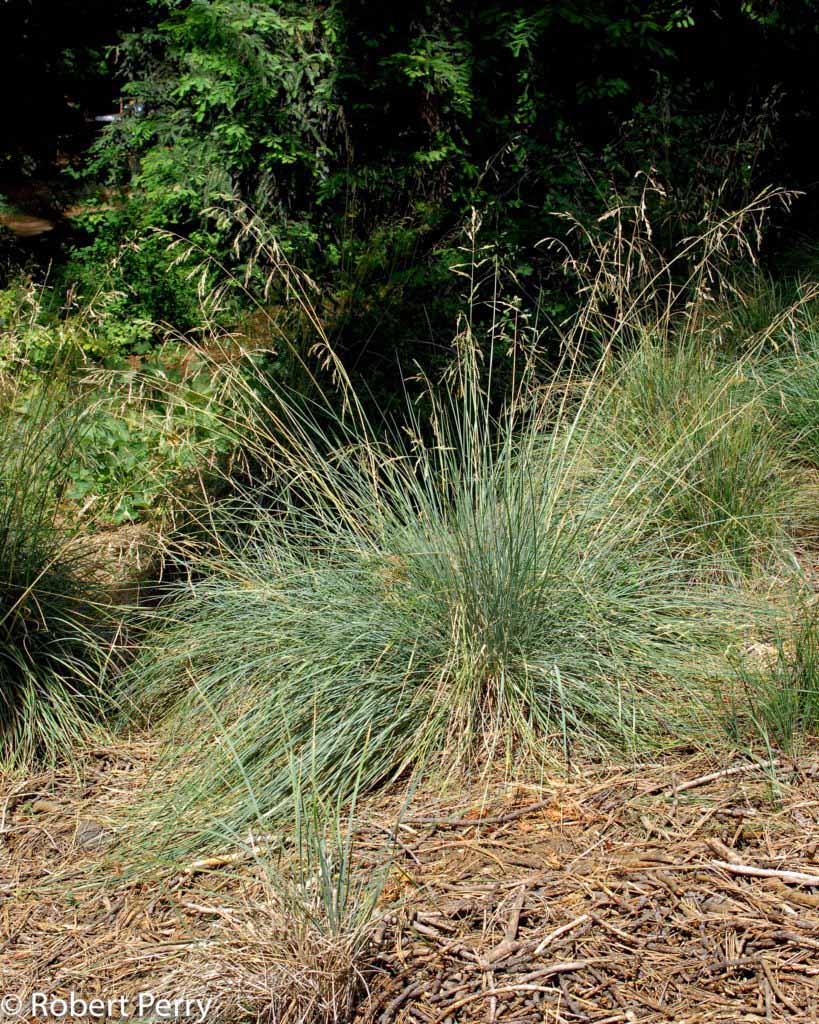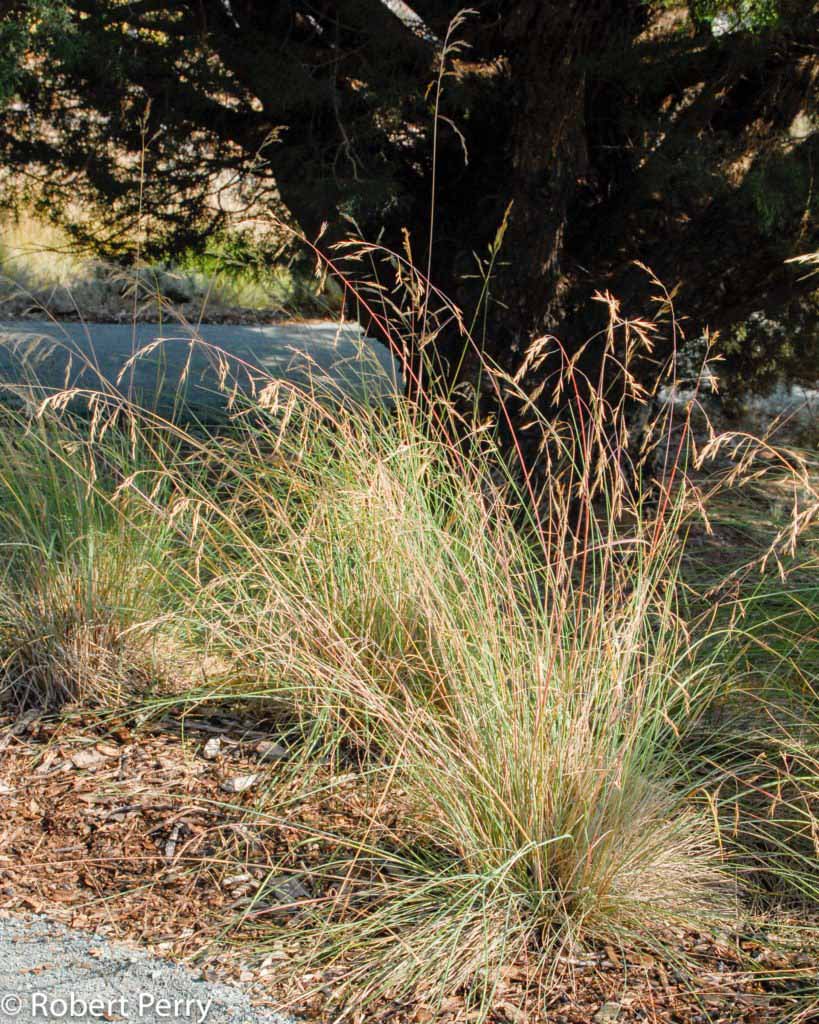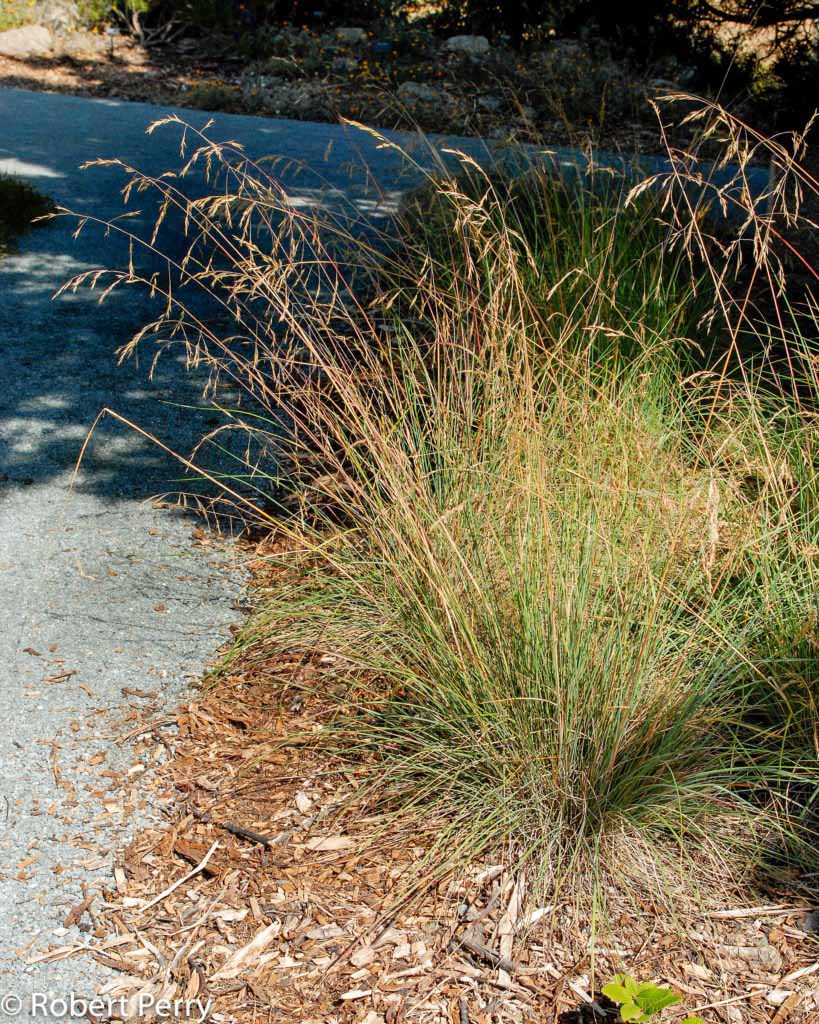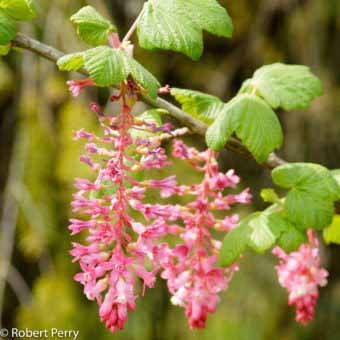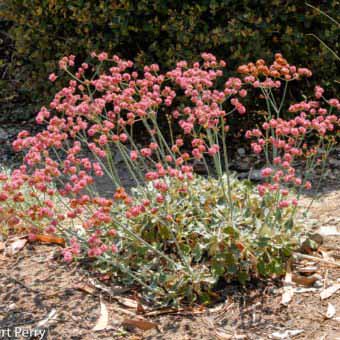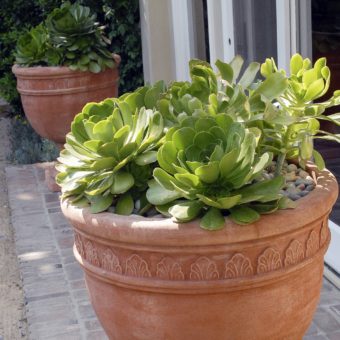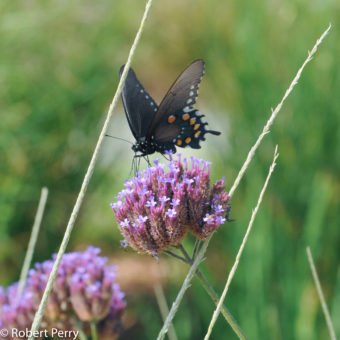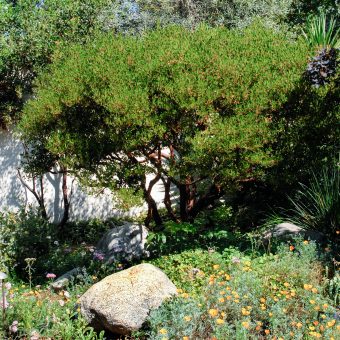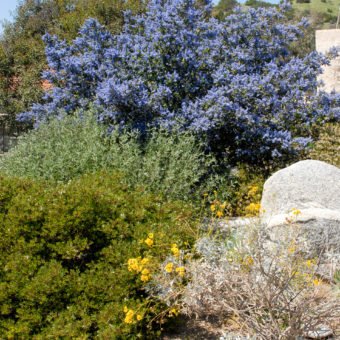The California fescue is a native grass found in both California and Oregon where it grows in dry climate areas within the chaparral and pine forest plant associations. The best stands and largest plants typically grow in partial shade where there is reduced heat and moisture stress. It is a clumping species with pale green to gray-green foliage that forms mounds 1-2 ft. tall; flower inflorescences grow to 3 ft. and provide attractive character in late summer.
California fescue offers both ornamental and restoration value in gardens and landscape areas throughout the Inland Empire. It is often used as an alternative to deer grass due to its more refine size and character. It can be planted in large drifts, casual masses, among trees, on slopes for erosion control and for habitat value. It is a good understory plant to California native oaks with low summer water needs.
